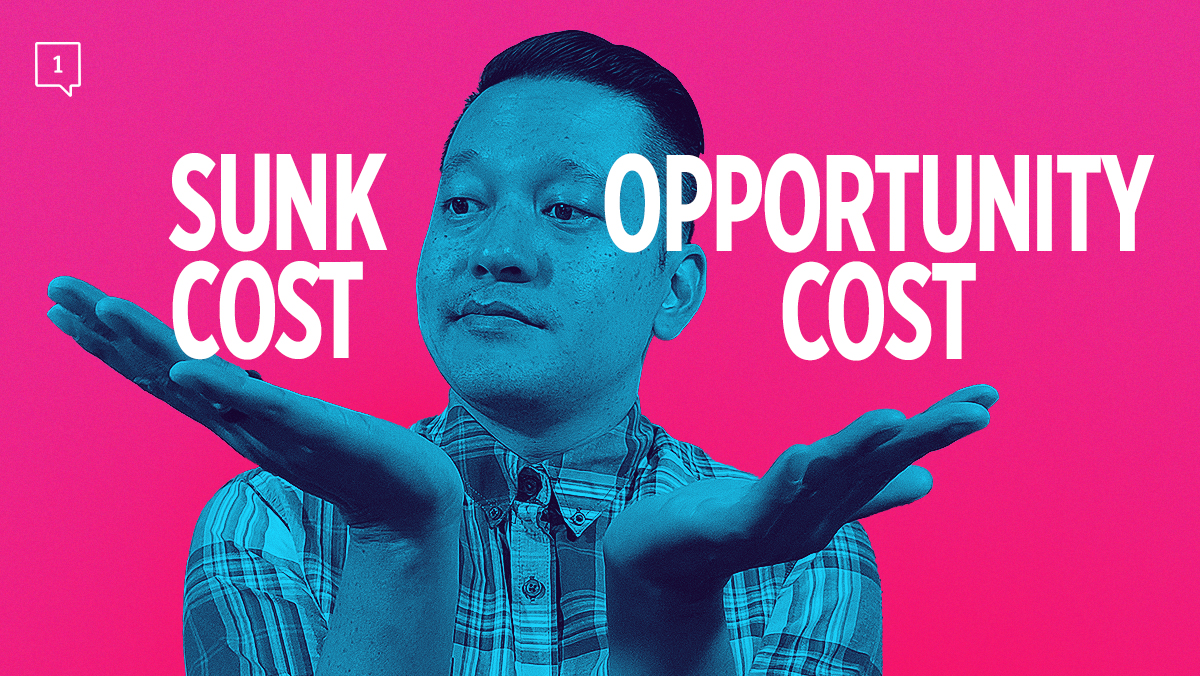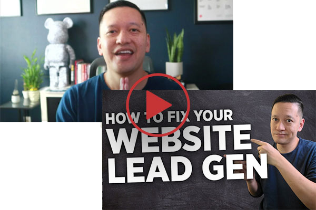Real Estate Marketing: Sunk Cost vs. Opportunity Cost
- Post author By Emmanuel Lao
- Post date 08/19/2021
- No Comments on Real Estate Marketing: Sunk Cost vs. Opportunity Cost

Table of Contents
Have you been grinding away on your real estate business but still not able to see the return that you are looking for? Is your website with aesthetically pleasing real estate web design not moving the needle? This is especially difficult if you’ve been investing a lot of your hard-earned money on a strategy, coaching program, or tactic that isn’t bearing any fruit.
However, nothing hurts more than spending money on something with no substantial results and then you continue to still keep spending money. It’s called the sunk cost fallacy and a lot of real estate agents find themselves in this predicament.
It’s one of the most painful real estate scenarios to be in and you can easily get stuck in it if you’re not paying attention. Because if there’s one thing that every real estate agent dreams of, it’s to have a great cash flow that will allow them to grow their real estate business.
How does sunk cost relate to real estate agents?
To help you better understand what sunk cost is, let me tell you stories.
It’s a true story about an agent that spends money on Realtor or Zillow ads. He is expecting a new deal to come rushing through the pipeline but it never happens. So this agent continues to spend and wait on his ads to generate results.
It’s also the true story of the Realtor that hires an SEO company, then dumps thousands of dollars over the time span of three to five years for his websites to rank organically on Google but it never happens.
And then you have that Realtor who continues to give more money to that SEO company expecting something to change because he’s already invested “this much” so he might as well keep going.
Or probably the most common of them all is a real estate team that sent out a direct email campaign once, didn’t get any new appointment, gave up for several months, and then decided to send out another direct email campaign with the hopes of getting a different result.
You see, these stories are not uncommon at all. It’s actually a rampant occurrence for most real estate agents.

YOUR WEBSITE ISN'T GENERATING ANY LEADS BUT WE HAVE A SOLUTION
In this free 20 minute video training you'll discover:
- 3 key secrets to restructuring your real estate business for growth
- Understanding the strategy of specialization
- A new approach to positioning yourself in real estate
- How to address your messaging to properly acquire prospects
Whenever you are ready, click the RED button below that says "Grab my training now"
What is sunk cost?
By definition, the sunk cost fallacy describes our tendency to follow through on an endeavor if we have already invested time, effort, or money into it whether or not the current costs outweigh the benefits.
Typically, sunk costs are costs that we’ve already incurred. This idea will then lead us to make irrational decisions because we are influenced by the sunk cost. If we were thinking rationally, only future costs and benefits should be taken into account.
LEARN HOW WE’VE GENERATED OVER 100,000 LEADS FOR OUR REAL ESTATE CLIENTS LAST YEAR
Marketing Strategy – create inbound strategies to better position you for the long game.
Systems Implementation – we design and implement systems for you to buy back your time.
Brand Building – position you as the thought leader and authority in your community.
What are examples of sunk cost fallacies?
This does not only apply to your real estate career but it can also happen in your personal life. For example, being in a negative relationship and sticking around in that relationship because you’ve already been in a relationship with that person for several years.
At the same time, it can also be continuing with a business where you are throwing money away at a marketing strategy that hasn’t panned out, but then you make the decision to keep spending money on it because you have already invested a huge amount of money.
Now, at face value, you may think that this is a short-term effect but in reality, it’s more systematic if it’s not properly identified and corrected.
For example, if you’re in that negative relationship and you stick it out, it will only make you and that other person miserable. It can then potentially affect your family, friends, and career. And for the other example of the marketing strategy, if you spend money on something that doesn’t work and you continue to spend money on it regardless, you’ll eventually run out of money.
Ultimately, this tends to happen because we, as humans, are not rational decision-makers and are often influenced by our emotions. This means that sometimes, we tell ourselves, “let’s just keep going” or “let’s just finish this” and we feel guilty or regretful for not following through even though a rational thinker would look at our situation and see that we’ve passed a break-even.
It’s also because of a particular occurrence called ‘loss aversion’. This is where the impact of a loss feels much worst than the impact of a gain. In other words, it’s easier for us to accept a loss than it is a win.
How exactly do you avoid or mitigate sunk cost?
Well, the easy answer is to be more self-aware but that’s challenging in and of itself. A better way of approaching it is to look at the opportunity cost.

YOUR WEBSITE ISN'T GENERATING ANY LEADS BUT WE HAVE A SOLUTION
In this free 20 minute video training you'll discover:
- 3 key secrets to restructuring your real estate business for growth
- Understanding the strategy of specialization
- A new approach to positioning yourself in real estate
- How to address your messaging to properly acquire prospects
Whenever you are ready, click the RED button below that says "Grab my training now"
What is opportunity cost?
Opportunity cost is the potential benefits that an individual or business misses out on when choosing one alternative over another.
The big difference between opportunity cost and the sunk cost is the difference between money already spent in the past and potential returns not earned in the future of a particular investment because that capital was invested elsewhere.
For example, if you invested $10,000 on Zillow ads, and getting that money back means that you need to have generated a return on investment that is more than the initial investment. Opportunity cost instead asks the question, where else could you have invested that $10,000 in a better way?
The good news is, when it comes to identifying opportunity costs, there is a simple math equation to follow. It’s the return on the best-foregone option less the return on the chosen option.
The idea behind opportunity cost is that the next time you find yourself wanting to invest money into something such as a new strategy, you first have to ask yourself if there is a better way to invest that money. You then have to run through this equation and identify if there is in fact better opportunity elsewhere.
If you don’t have these numbers, then you’ll need to either draw some hypothesis on them or try budgeting to collect data on what the true numbers are. Then you can plug it into the equation and see if your decision is truly viable.
Final Thoughts
If you want to dig a little bit more into viable solutions, specifically with marketing strategy, then I highly recommend that you join our free Facebook Group. We talk all things digital marketing and really nerd out on things like this.
However, if you want to dig into the math of your business and see how you can grow your business faster and more efficiently, then schedule a strategy session with us today.
